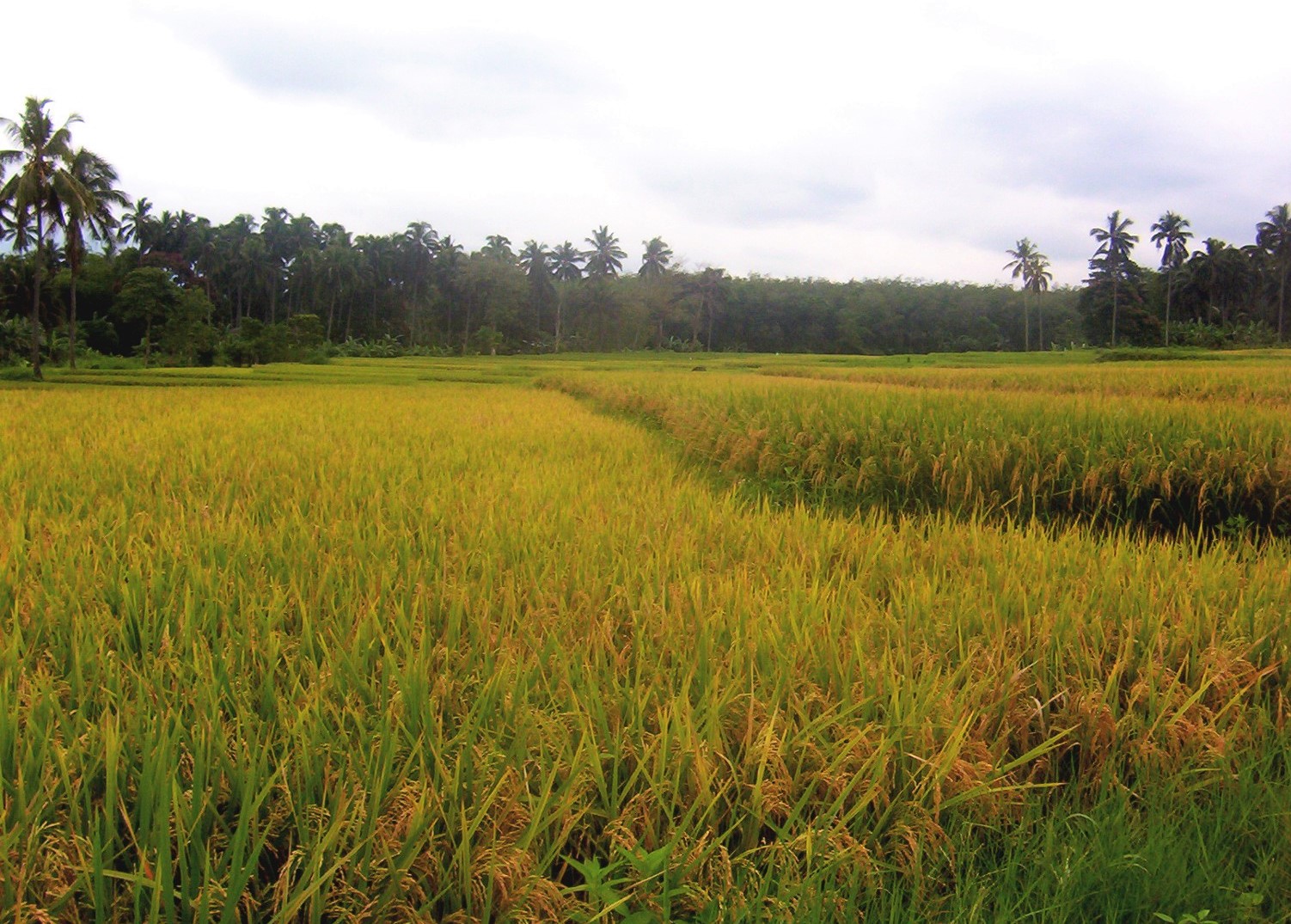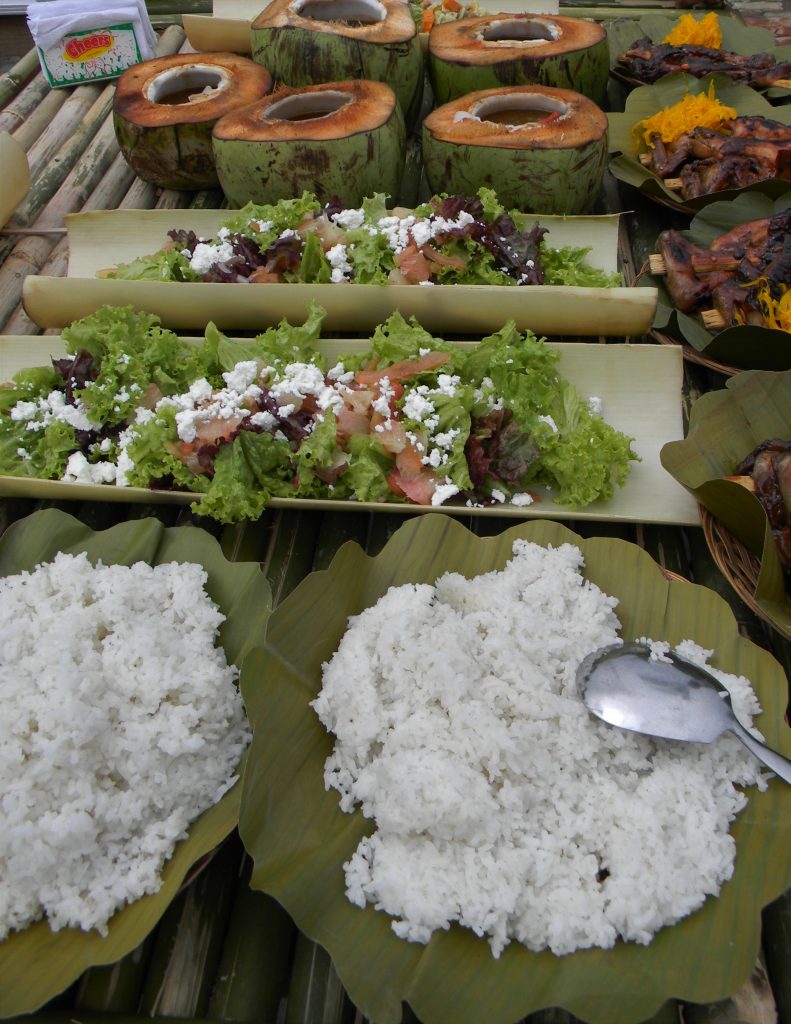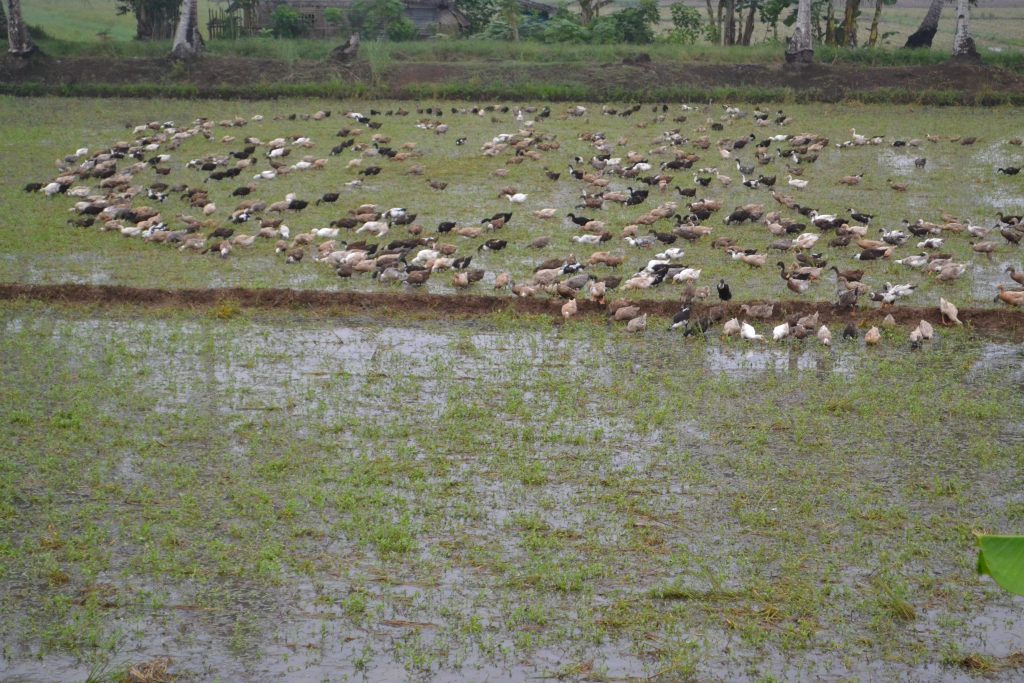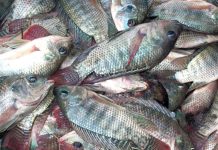
Rice is the staple food of Filipinos. In fact, studies show each person eats more than half a kilogram a day. That’s about 214 kilograms of rice each year.
“If we did not have rice, our deepest comfort food, we would probably feel less Filipino,” observed the late food epicure Doreen Fernandez.
Most of the rice eaten by Filipinos are grown commercially – that is, loaded with synthetic pesticides and commercial fertilizer when they were raised in the fields.
“Pesticides are like bombs being dropped in the food web creating enormous destruction,” said entomologist Dr. K.L. Heong when he was still connected with the Laguna-based International Rice Research Institute (IRRI).
Unknowingly, pesticides are killing more than just the pests. “Some pesticides harm the living organisms other than the targeted pest,” pointed out the Davao-based Technical Assistance Center for the Development of Rural and Urban Poor. “Some travel to the food chain to bioaccumulate in higher organisms.”
Every year, more than 20,000 people die because of pesticides, the Geneva-based World Health Organization reports. Half of the poisonings and three-quarters of the deaths occur in developing countries like the Philippines.

These days, however, as some Filipinos are getting health conscious, there are those who prefer eating organically-grown rice. In Mindanao, a few farmers are now raising this kind of rice.
Thanks to farmers who are practicing sustainable ecological agriculture (SEA), which “establishes high and lasting soil productivity and conserves or reestablishes a well-balanced environment.”
SEA tries to integrate three main goals: environmental health, economic profitability and social and economic equity. That’s according to the Cotabato Agriculture and Resources Research and Development Consortium (CARRDEC), whose main office is based at the University of Southern Mindanao in Kabacan, North Cotabato.
“Sustainability rests on the principle that we must meet the needs of the present without comprising the ability of future generations to meet their own needs,” explains the 20-page CARRDEC Farm Primer, published in tandem with the M’lang-based Southern Christian College.
Accordingly, SEA help farmers select appropriate management practices based on the following principles: selection of species and varieties well suited to the site and locations on the farm; diversification of crops, livestock, and cultural practices to enhance the biological and economic stability of the farm; management of the soil to enhance and protect soil quality; efficient and humane use of inputs; and consideration of farmer’s goals and lifestyle choices.
In application of these principles, the following basic practices are promoted: no burning of farm residues and other organic matter; no cutting of trees; no use of chemicals; and no monocropping.
Organic farming is one of the initiatives of SEA. “Organic agriculture is a production system which avoids or largely excludes the use of synthetic compound fertilizers, growth regulators, and livestock feed additives,” the primer states.
As observed by SEA, organic agriculture relies on crop rotation, crop residues, animal manures, legumes, green manures, off-farm organic wastes, mechanical cultivation, mineral-bearing rocks and productivity and tilt to supply nutrients and control diseases, insects, weeds, and other pests.
On why organically-grown crops are better than those raised commercially, the primer points out: “The fear of pesticide residues in food is a common environmental concern. Organically-grown food taste better and they are healthier and nutritious.”
By organically grown, it means grains, vegetables or fruits were raised without commercial fertilizer and synthetic pesticides.
The farm primer shares eight steps in growing rice organically. The first step refers to seed preparation. Only those seeds which have the following characteristics: yield adaptability, resistance to pests, and lodging. Once identified, the seeds are soaked for 24 hours and then set aside for 24-36 hours. The rate of sowing seeds is 20 to 40 kilograms per hectare.
But before planting, the field must be prepared thoroughly. The dikes are expanded to two meters wide for other crops and animal housing. The dikes are cleared when rice has grown its stanch. Grasses are not cut as they serve as temporary harborage for insects and other predators.
“Prepare the land thoroughly to incorporate weeds into the soil,” the primer advises. “Harrow and level the field for better water management.”
The third step refers to planting. “Pull 18-21 day-old seedlings and transplant them immediately,” the primer says. “Plant 1-2 seedlings per hill at 30 centimeters by 10 centimeters spacing. Replant missing hills 5 days after transplanting.”
Step 4 has three soil fertility management: green manuring, farm waste utilization, and fallowing. In green manuring, it explains: “Broadcast leguminous crops one day before harvesting the rice. Allow the crop to grow and bear flower and plow it under at this stage. Crop rotation with leguminous crops improves soil condition and fertility.”
Farm wastes denote rice straw, leaves, and animal waste, among others. All these can be turn into compost. The compost conditions the soil and can be applied as follows: basal application during land preparation; first top dress at 10 days after transplanting and second top dress at 30 days after planting.
In fallowing, the primer gives this information: “Allow the field to rest to enhance soil fertility through nutrient recycling and accumulation of organic matter. In addition, allow weeds to grow for one month to one year. Plow them under during land preparation for the next rice crop.”
Step 5 has four ecological pest management practices. First is water management. In his book, Water: The International Crisis, Robin Clark reports that an average farmer needs 5,000 liters of water to produce one kilogram of rice. “Rice growing is a heavy consumer of water,” agrees the IRRI report, “Water: A Looming Crisis.”
The farm primer states: “Introduce water to 2-3 centimeters depth 7-9 days after transplanting. Allow golden apple snail to eat the growing weeds. With rice black bug infestation, drain the field three days before and three days after full moon.”

Second is introduction of ducks. “Herd ducks in the rice field 10 to 15 days after transplanting until booting stage,” the primer says. “Maintain 10-15 centimeters water depth. Ducks prey on insects and snails and serve as weeders.”
According to Department of Agriculture, raising ducks in rice fields is one of the best strategies in increasing rice productivity as it reduces labor and inputs characterized by its devoid use of artificial fertilizers and chemicals.
More importantly, recent studies have shown that ducks in the rice paddies can effectively reduce the emission of methane into the atmosphere because of the constant paddling of ducks.
Planting of insect repellant crops is the third management practice. “Plant insect repellant crops along the dike,” the primer says. Examples include winged beans (kadios), lemon grass, cosmos, and madre de cacao or kakawate.
Research done by the author showed makabuhay as a natural pesticide. In some parts of the country, farmers chop the leaves and scatter them in their rice fields or vegetable plots. This has been proven to be effective against brown planthopper, green leafhopper, and rice stemborer.
Makabuhay vine can also be grinded and broadcasted at the rate of two kilograms per square meter on rice seedbeds 10 days after sowing. This procedure has proven “makabuhay” as toxic as broadcast carbofuran. Toxic effect lasts five to seven days after application.
The fourth and last management practice is the use of insect attractant. “Hang dead animals like frogs or rats and chicken intestines to attract rice bugs,” the primer says.
The sixth step is harvest and post-harvest practices. “Harvest palay when 80-85% of the grains are ripe,” the primer suggests. “Thresh immediately using a single pass drum or ‘bulhot.’ Dry palay seeds to 14% moisture content. Mill palay seeds using an organic rice mill, that is, a rice mill that has been sanitized.”
The seventh step is the preservation and conservation of rice seeds. “Choose good quality panicles (well-filled, free from insect damage). Bundle panicles and hand them in the shade.”
The last step is marketing. “Pack organically-grown milled rice in a clean white sack (50 kilograms per sack) and deliver to outlets.”
Rice, IRRI says, “is the principal food for over 60% of mankind.” It is particularly important to Asia where over half of the world’s population lives.
“Rice is the one thing that truly defines Asia,” said former IRRI Director-General Dr Ronald Cantrell. In China and Korea, where elders recall times when food was hard to come by, some still greet each other with the question, “Have you had your rice today?”
Rice contains carbohydrates, protein, minerals, vitamins, and fiber. A Reader’s Digest feature states: “Most of the white rice available in the supermarket is enriched, which means, besides its other assets, it is also supplemented with iron, niacin and thiamine.
“But most of these added nutrients are lost if rice is washed before cooking or drained afterward. Brown rice, with its healthful bran layers, contains all these nutrients naturally, plus fiber, oil and vitamin E. Low in sodium and fat, with no cholesterol, rice is a boon to weight worriers and those allergic to other grains.”
Rice, a member of the grass family and known scientifically as Oryza sativa, has devotees all over the region. The Reader’s Digest feature shares this bit of information: “India is famous for its pulaus, which is served with all kinds of meat, poultry and seafood. A popular Japanese rice dish is sushi, rice flavored with sweet rice vinegar and wrapped with fish and vegetables. Indonesians set a whole table with rice and assorted goodies that go with the grain; the feast is called rijstafel. The Filipinos are known for its bibingka or rice cake. The Chinese make cakes, noodles and paste from rice.”
Writing about rice, Chinese poet Yang Ji penned: “Grain upon grain, / Fresh and delightful as frost, / A dazzling jewel, / To what can I compare this treasure?” (To be concluded)






